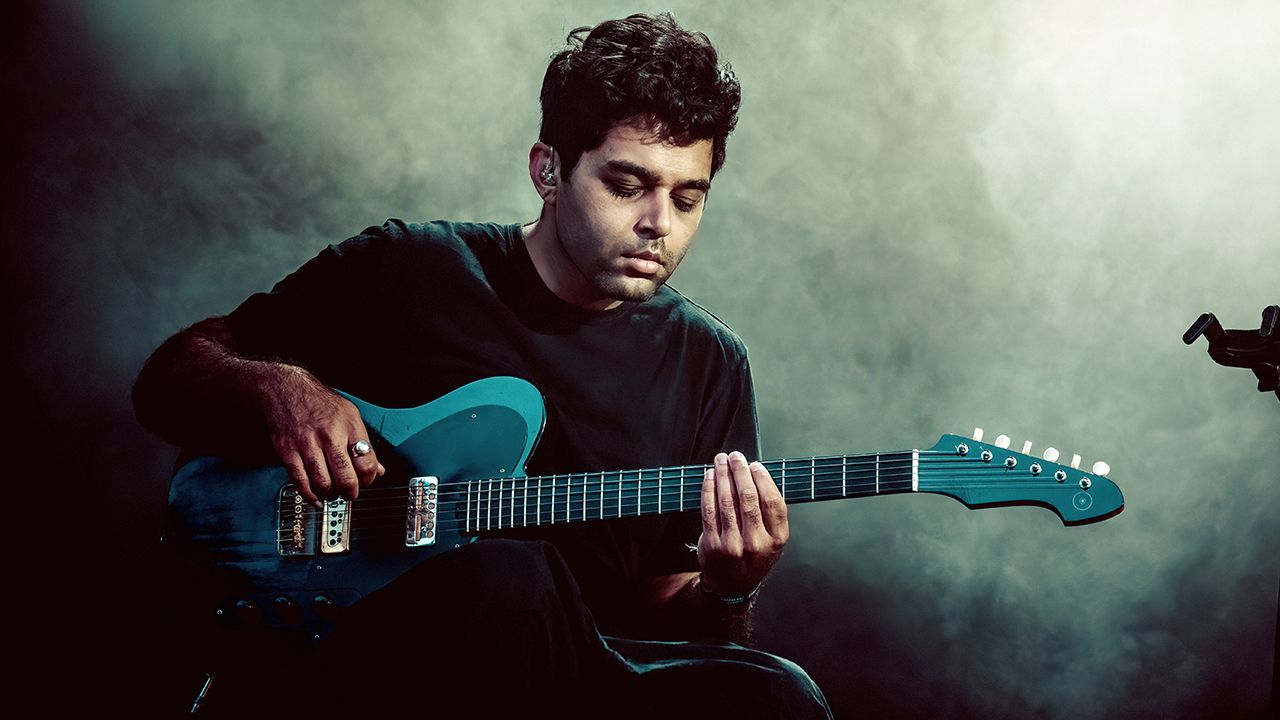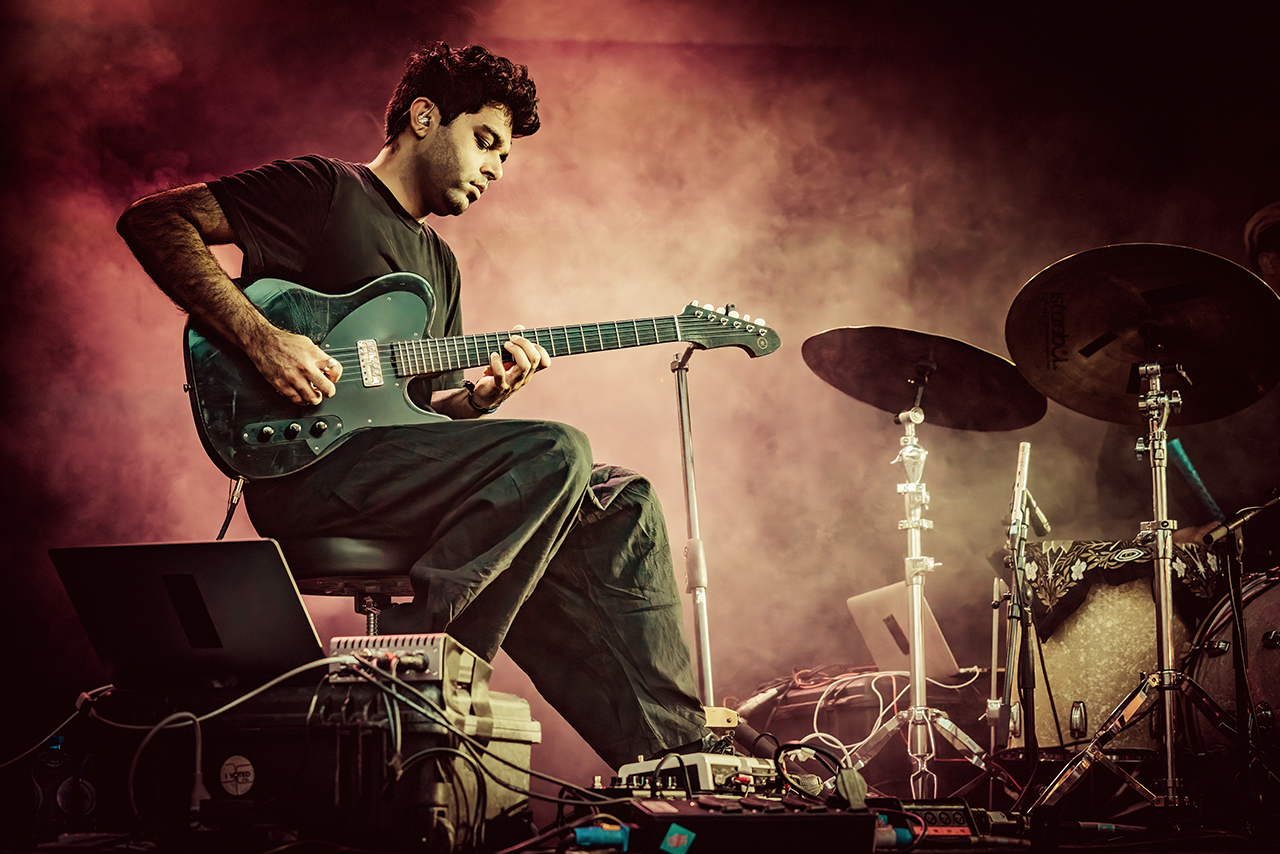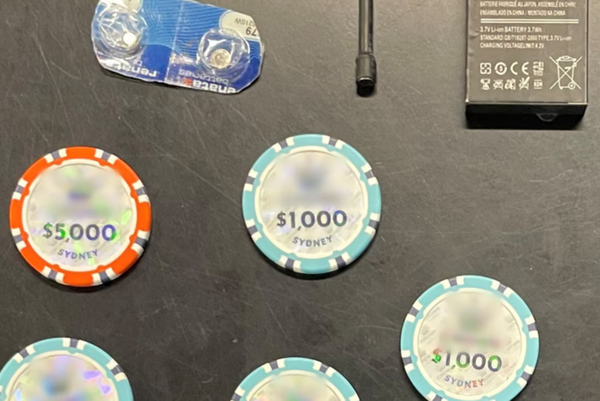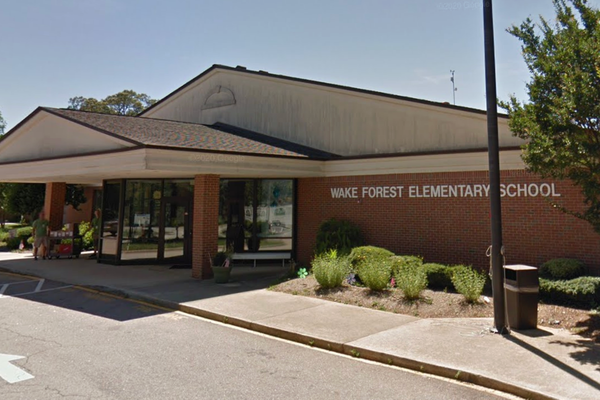
New York guitarist and producer Rafiq Bhatia recently composed for the ensemble Alarm Will Sound – along with Afrooj Aftab, Devonte Hynes (Blood Orange) and Daniel Wohl – as part of a series pairing composers with filmmakers to create new works for film and live orchestra.
He’s continued such soundtracking work with his Son Lux bandmates – they scored recent Marvel movie Thunderbolts and were Oscar-nominated for their work on Everything Everywhere All at Once. But his upcoming solo album, Environments, finds him in a much more intimate, instinctual setting.
The tracks are all improvised; and some, like album opener Aviary | Sunrise, were achieved in one take. For Bhatia – as with his visual identity explorations with artist Michael Cina – there’s a constant need to explore juxtaposition.
Or as he posits from his sunlit New York apartment: “An intimacy and then a complete unfamiliarity.” From emulating the air of a woodwind instrument to switching up character profiles on his Eventide H90, his quest is to make the guitar sound less like a guitar.
There have been times when you considered a future without the guitar. What shifted for you and led you to Environments?
“I made this EP called Standards Volume I. I was thinking, ‘What if I could make a recording that took on the American Songbook, but use this process I've been cultivating in the studio?’ What ended up happening was that I barely touched the guitar.
“I’ve been using this analogy – we were at opposite ends of the party; I was turning around to leave, and I looked back at it one more time. I was like, ‘Hold on!' because I love the guitar. It’s so entangled in expressing my ideas.
“But I felt there was something missing about the ability, when you improvise, to speak to a specific moment in time. I wanted the music to feel like it’s growing and coming to life right in front of you. My 10 years in the studio were to interrogate that assumption – how central is it that the music comes together in real time?”
The concept of studio-as-instrument comes up repeatedly in your work. Who are the pioneers for you in that field?
“Certainly Madlib and Flying Lotus, and then Jimi Hendrix. Every time I think I've found some other direction – ‘I’m finally getting out of the shadow and doing something different’ – I go back and I’m like, ‘Jimi did that when he was 26!’ It’s hard to think of a musical community exploring the power of sound without acknowledging Hendrix’s influence.
“But I can also take it back to listening to how A.R. Rahman revolutionised the sound of Bollywood music, juxtaposing modern production techniques with old-school instrumentation. In hip-hop, early Wu-Tang records sampled old Japanese film scores and Kung Fu stuff. The graininess of the sound felt like an important part of the identity and mystery of the music.”
You’re known for alternative experimental guitar work with Son Lux. Tomorrows – the companion album to Everything Everywhere All at Once – showcased a sound you dubbed “ghost guitar.” What is it?
“I’m always trying to figure out how to accomplish on the guitar the things I love about woodwinds and horns – the feeling of breath in the sound. When bassists play that super-sub bass it's like air moving. I’m like, ‘How do I make the guitar do something like that?’
“I discovered that if you pitch-shift the guitar up into a register several octaves higher, and you play that through a speaker, you feel the air moving. But the attack of the sound is awful – so I use a volume pedal to activate a reverb.
“The thing I’m looking for is like a beam of light coming in through a window and illuminating a big empty space. That’s the Ghost Guitar. It can be a very spooky feeling, but a little silly, which was perfect for something like Everything Everywhere All at Once.”
Around the same time you started working with Eventide to offer input on the H90 Harmoniser multi-effects pedal. How did that come about?
“I visited them in person pre-pandemic. I’m in the middle of New Jersey at their factory; I go into this little windowless room and they’ve got the H90, and they’re like, ‘What else do you want it to do?’
If you push a button and the sound pours out exactly like you imagined, run in the other direction
“I’m like, ‘Here are all these things I’d love to get rid of so I can make this smaller – insert points, MIDI program change capability and set list mode, so I could completely replace a pedal board controller.’ These are things that the H90 can do that a lot of people don’t even realise.
“Let’s say I want a sound with reverb, and I’ve got a distortion pedal in one of the insert points, and I want the distortion to only be on the reverb signal. I want a dry guitar blended with distortion. You can do that with the H90.

“In a setting like Son Lux, where we make all these sounds that have nothing to do with the guitar, I have to be able to switch, sometimes instantaneously, between completely different characters.”
Your pedalboard also includes a Klon KTR, a Strymon Iridium amp and guitar cab simulator, and a Z.Vex Fat Fuzz Factory with a ‘SUBS’ switch to activate low-end rumble. Why this pedal over a traditional octave?
“That’s been on there longer than anything else – it’s the one thing I cannot get rid of. I bought it at the very beginning of playing with Son Lux. There’s a song from the first record called Lost It To Trying.
“I had to play that bassline and I was like, ‘How do I make the guitar sound like a baritone sax?’ The H90 can get the pitch down an octave. Whenever something helps me make the guitar feel less like a guitar, I usually get excited about it!
“With all the great players it comes back to how they physically control and manipulate the sound. If you buy a thing, push a button and the sound just pours out of it exactly like you imagined, run in the other direction. The component sounds need to be simple enough that there’s room for you, the player, to express your ideas.”
Your guitar of choice is a custom Flipperkaster built by Dutch luthier Flip Scipio, who has built instruments for Paul McCartney, Bob Dylan and Paul Simon. What did you want from the build?
The Flip guitar disappears into me – I focus on making music and it does all the things
“If you’ve ever seen Kill Bill, Flip Skipio is like Hattori Hanzō. When I got to New York I kept hearing this guy’s name. I was at the studio in Iceland mixing the Breaking English record with Alex Somers and he had one of Shahzad [Ismaily]’s baritone guitars that Flip had built, with a late ’60s Teisco pickup and an early ’70s DeArmond Dynasonic pickup. It had a blend knob between the two pickups, so rather than a switch, you can find or blend continuously.
“I asked Flip to do the same thing for my guitar. He had the same pickups flying around because he collects them, and he made me that blend thing. I love how that guitar just disappears into me – I can just focus on making music and it does all the things without asserting itself.”
You’re headed out on tour in September and October. What do you hope will happen?
“For me, Breaking English was a bonsai tree. Whatever shape it has, it’s hardened into that. Whereas Environments feels like an old garden growing wild – beautiful and unpredictable things can happen. There’s a sense of impermanence I can hear in that music; it’s this way right now, but next time it might be different.
“I’m excited that we’ve found the feeling and the integrity of each of these environments individually. What happens when we take it all apart and put it back together again in some other way? That’s what we're going to find out.”
- Environments is out on September 12 on Anti Records.







